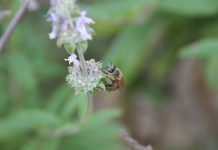
Picture a lavish, vibrant carrot salad on your plate.
Have you ever stopped and wondered why carrots, a popular veggie, are predominantly orange and not, say, blue or pink?
An insightful study has peeled back the layers to unveil the mystery behind the orange hue of carrots.
This journey not only unfolds a story of genetic mastery but also narrates a historical tapestry that spans centuries and continents.
Massimo Iorizzo, an associate professor of horticultural science at North Carolina State University, alongside a team of dedicated researchers, embarked on an intriguing expedition through the genetic world of over 600 carrot types.
Their findings, illuminated in a paper published in Nature Plants, provide fascinating insights into why and how carrots acquired their characteristic orange color.
Contrary to what one might anticipate, the striking orange color doesn’t originate from genes that are active or “turned on.”
Astonishingly, the genes need to be “turned off,” or recessive, to enable the orange hue to blossom.
These genes regulate the presence of orange carotenoids, substances that are precursors of vitamin A and have been associated with numerous health benefits, including a reduced risk of certain eye diseases. In the typical dietary landscape of America, orange carrots are celebrated as a lush source of pro-vitamin A.
The scientific team, which included researchers from the University of Wisconsin-Madison, sequenced the genomes of 630 carrot types, drawing a genetic map that plotted the evolution and domestication of the orange carrot.
Their research builds upon a 2016 study, also conducted by them, which was the first to sequence the carrot genome and identify the gene responsible for the pigmentation of yellow carrots.
Through a method known as “selective sweeps,” which essentially involve analyzing structural variances among various carrot groups to pinpoint areas of the genome undergoing significant selection, the researchers found that genes related to flowering were predominantly under selection.
The goal?
Primarily to delay the flowering process, since flowering tends to render the taproot (the edible part of the carrot) woody and inedible. Many genes that regulate flowering were selected in multiple populations of orange carrot, likely to adapt them to varying geographic regions.
Diving deeper into the historical roots of the carrot, the study highlights that carrots were likely domesticated around the 9th or 10th century in western and central Asia. The ancient lands of central Asia were familiar with purple and yellow carrots, the latter likely favored due to their pleasant taste upon being brought to Europe.
The orange carrot, with its endearing color and sweeter flavor, only began to grace western European fields around the 15th or 16th century, potentially born from a cross between white and yellow carrots.
The research not only chronicles the probable domestication and selection timeline of carrots but also ventures a hypothesis regarding the emergence of orange carrots. Positioned at the base of the phylogenetic tree for the orange carrot, white and yellow carrots are likely ancestral relatives, contributing to the enchanting orange variety we savor today.
As the orange carrot traipsed through time, it garnered popularity, especially in northern Europe during the 16th and 17th centuries. Art from this epoch mirrors the various shades of orange carrots, testifying to their prevalence and appeal.
The latter part of the 19th century and the early 20th century witnessed a burgeoning appreciation for the orange carrot as understanding of alpha- and beta-carotenes (precursors to vitamin A) evolved.
As we nibble on our carrots today, we not only relish a vegetable rich in beneficial carotenoids (indeed, the term carotenoid is derived from carrots) but also a piece of history, shaped by centuries of natural and human selection.
This research, supported by the National Institute of Food and Agriculture and the US Department of Agriculture, not only satiates our curiosity about the carrot’s vibrant color but also propels further explorations into optimizing the health benefits harvested from this beloved vegetable.
Follow us on Twitter for more articles about this topic.



